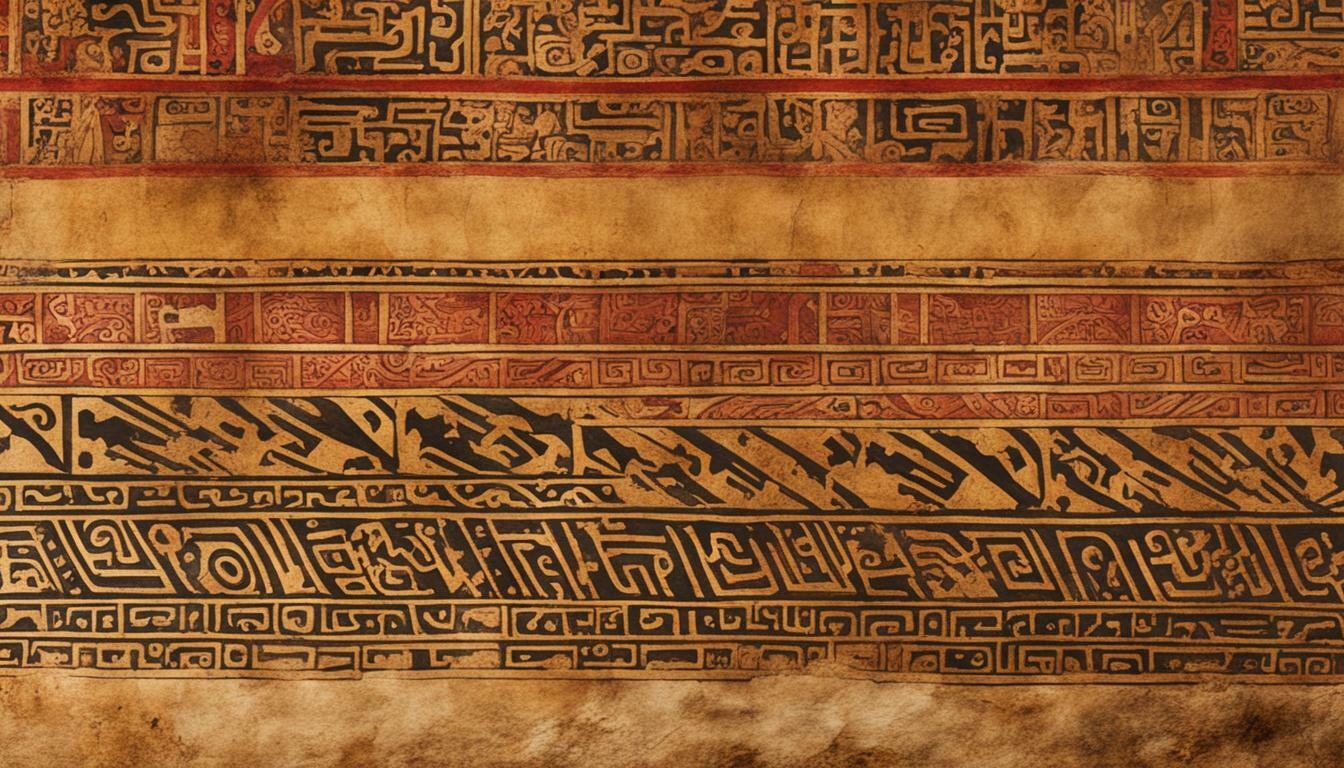Unraveling the Mysteries of Codice Maya de Mexico
The Codice Maya de Mexico, also known as the Grolier Codex, is the oldest surviving book of the Americas and holds valuable insights into the Mayan culture and history. Discovered in Mexico in the 1960s, this ancient manuscript has been the subject of intense debate regarding its authenticity for over fifty years. Recent scientific and art historical analyses, however, have confirmed that it is indeed a genuine artifact of the ancient Maya civilization.
Thank you for reading this post, don't forget to subscribe!
Key Takeaways:
- The Codice Maya de Mexico, also known as the Grolier Codex, is the oldest surviving book of the Americas.
- Its discovery in the 1960s sparked debates over its authenticity, which have been resolved through recent scientific and art historical analyses.
- The codex provides valuable insights into the Mayan culture and history, including the use of sacred books in Mesoamerica and the role of astronomy in ancient Maya societies.
- Yuri Knorozov, a Soviet linguist, made significant contributions to deciphering the Maya hieroglyphic script, filling gaps in our understanding of Mayan history and civilization.
- The Codice Maya de Mexico holds modern relevance, bridging the gap between the ancient past and the present, and is accompanied by an exhibition at the J. Paul Getty Museum.
Discovering the Codice Maya de Mexico
The Codice Maya de Mexico, once believed to be a forgery, was discovered in Mexico during the 1960s, sparking discussions and controversy among experts. This ancient Maya codex, also known as the Grolier Codex, has been a subject of debate for over fifty years regarding its authenticity. However, recent scientific and art historical analyses have confirmed that it is indeed the oldest surviving book of the Americas.
Unraveling the mysteries of the ancient Maya civilization, the Codice Maya de Mexico provides a fascinating glimpse into their culture and history. This remarkable codex contains intricate ancient Maya scripts and hieroglyphics, offering valuable insights into their advanced mesoamerican writing system.
“The Codice Maya de Mexico is a testament to the incredible achievements of the Maya civilization and their mastery of the written word,” says Dr. Elena Ramirez, an expert in ancient Mesoamerican art. “Decoding these ancient scripts allows us to better understand their social and historical aspects, shedding light on their customs, beliefs, and daily life.”
The Codice Maya de Mexico, along with other Maya codices, is a testament to the rich artistic and intellectual traditions of the Maya civilization. It serves as a bridge between the ancient past and the present, offering valuable insights into their culture and history. Today, the codex continues to be of great relevance to contemporary Maya communities, connecting them to their ancestors and preserving their cultural heritage.
| Discoveries | Year |
|---|---|
| The Codice Maya de Mexico | 1960s |
| The Oldest Surviving Book of the Americas | N/A |
| Confirmation of Authenticity | Recent |
The discovery of the Codice Maya de Mexico marked a significant milestone in understanding the ancient Maya civilization and their mesoamerican writing system. It has opened up new avenues of research, allowing us to decode the mysteries of the Mayan hieroglyphics and gain a deeper appreciation for their culture, history, and intellectual achievements.
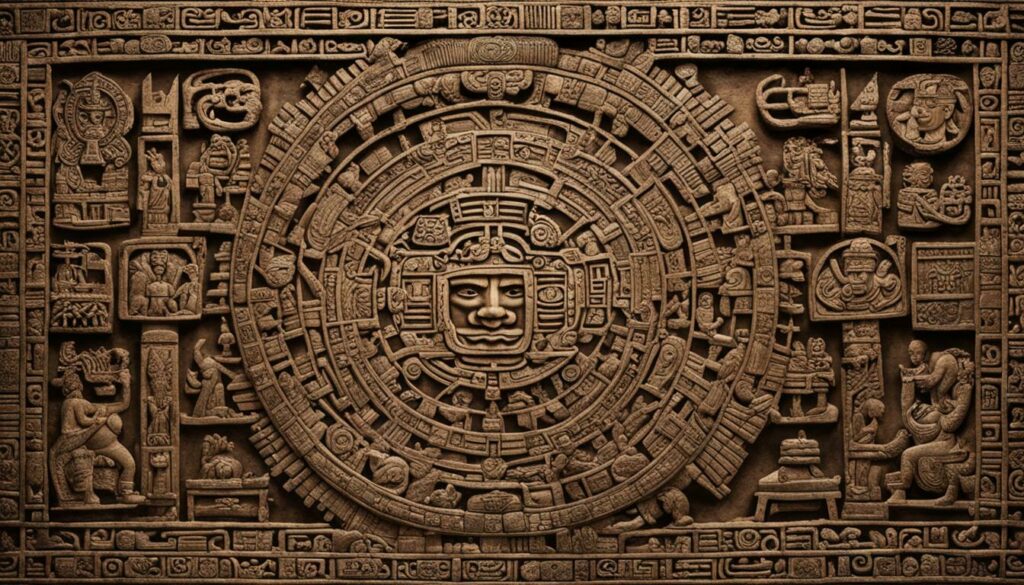
By unraveling the secrets of the Codice Maya de Mexico, we gain valuable insights into the profound knowledge and accomplishments of the ancient Maya civilization. It is a testament to their ingenuity and intellectual sophistication, reminding us of the rich cultural heritage that still resonates today.
Decoding the Maya Hieroglyphics
Maya hieroglyphics, a complex and sophisticated writing system, offered a window into the rich cultural and historical tapestry of the ancient Maya civilization. For centuries, these intricate hieroglyphs puzzled scholars and archaeologists, until the groundbreaking work of Yuri Knorozov shed light on their true meaning.
Knorozov’s research revealed that the Maya hieroglyphic script was not simply decorative but a fully functioning writing system capable of expressing sentences in the spoken language. His expertise in studying other writing systems, combined with reproductions of Mayan codices and manuscripts, enabled him to successfully decode the Maya script.
The decipherment of Maya hieroglyphs opened up a wealth of knowledge about the social, political, and historical aspects of the Maya civilization. Through the inscriptions on stelae, temples, and other structures, we have gained insights into their religious rituals, political alliances, and astronomical knowledge.
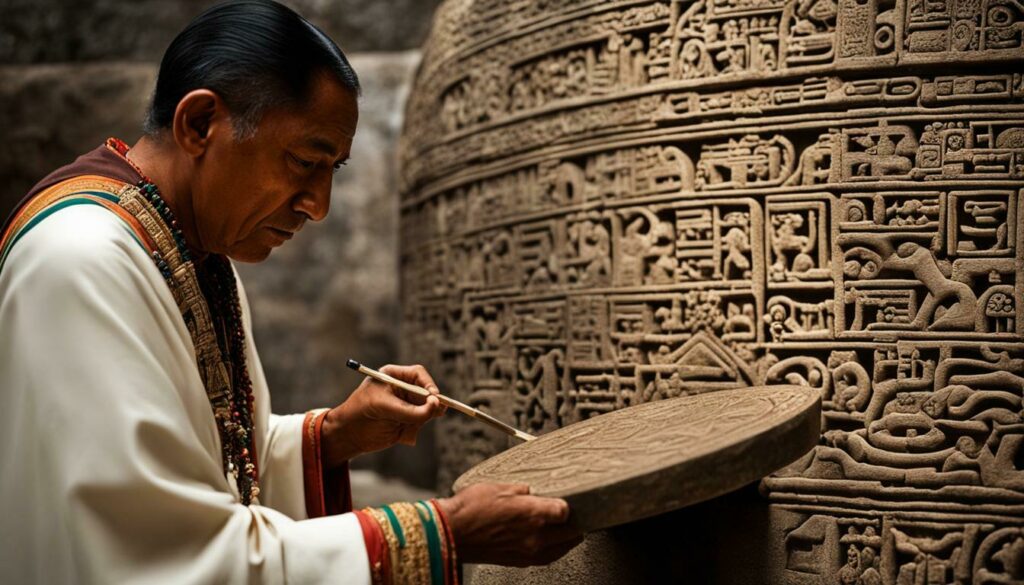
One of the most fascinating aspects of the Maya writing system is its use of glyphs to represent both sounds and concepts. These hieroglyphs could be combined to form complex sentences and convey a wide range of ideas. By studying the syntax and grammar of the Maya language, researchers have been able to piece together the meanings of thousands of hieroglyphs.
In addition to providing valuable historical and cultural information, Maya hieroglyphs are also a form of art. The precise and intricate nature of the glyphs reflects the artistic skill and craftsmanship of the Maya scribes. Their work has survived through the centuries, allowing us to appreciate their masterful use of color, composition, and symbolism.
Table: Examples of Maya Hieroglyphs
| Maya Glyph | English Translation |
|---|---|
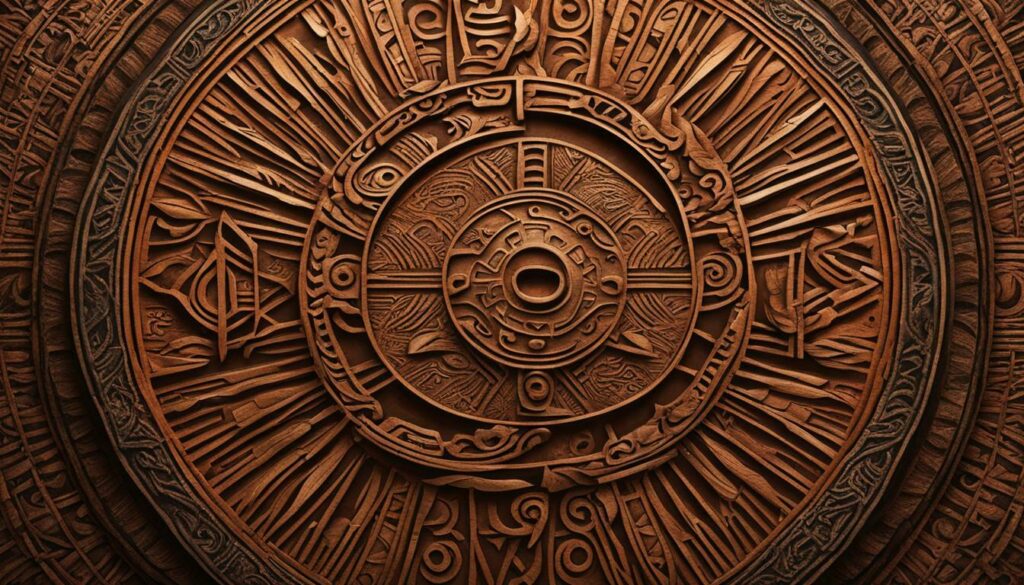 | Human |
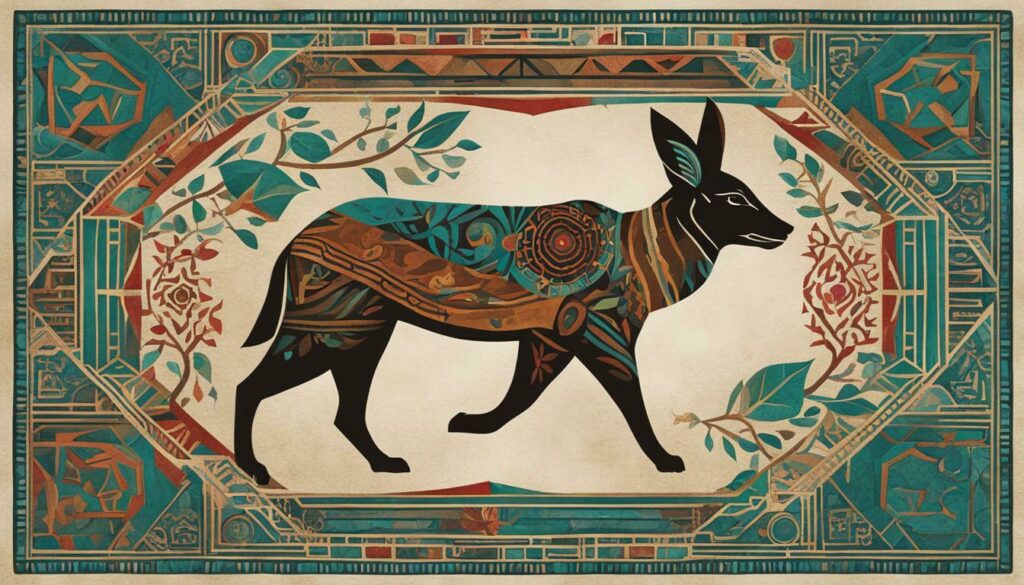 | Water |
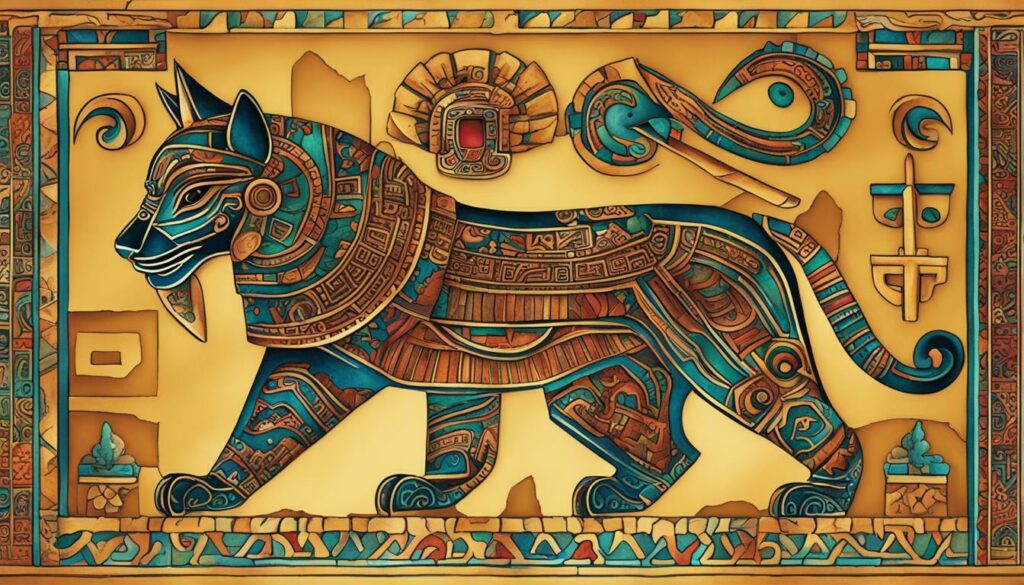 | Jaguar |
 | Fire |
As we continue to study and decipher Maya hieroglyphs, our understanding of the ancient Maya civilization deepens. These intricate writings provide a fascinating glimpse into their complex society, remarkable achievements, and enduring legacy.
The Importance of Yuri Knorozov’s Work
Yuri Knorozov’s groundbreaking work on decoding Mayan hieroglyphics revolutionized the study of the Maya civilization and shed light on their social, political, and historical aspects. His research and analysis paved the way for a deeper understanding of the ancient Maya culture, their remarkable achievements, and their complex writing system.
Knorozov’s expertise in studying other writing systems, combined with the aid of reproductions of Mayan codices and a manuscript by Diego de Landa, allowed him to successfully decode the Maya script. His discoveries revealed that the Maya hieroglyphic script was not just a collection of symbols but a fully functioning writing system that could express sentences in the spoken language of the Maya people.
The decipherment of the Maya script was a significant milestone in understanding the Maya civilization’s history and achievements. It provided invaluable insights into their political structures, religious beliefs, astronomical knowledge, and cultural practices. Knorozov’s work enabled researchers to interpret and analyze Maya inscriptions, uncovering details about dynasties, rituals, historical events, and the daily lives of the Maya people.
Despite the challenges of not being able to visit the Maya lands or access original source materials, Knorozov’s dedication and expertise revolutionized the field of Maya studies. His contributions have had a lasting impact on our understanding of the Maya civilization, and his work continues to inspire further research and exploration into the rich history and culture of the Maya people.
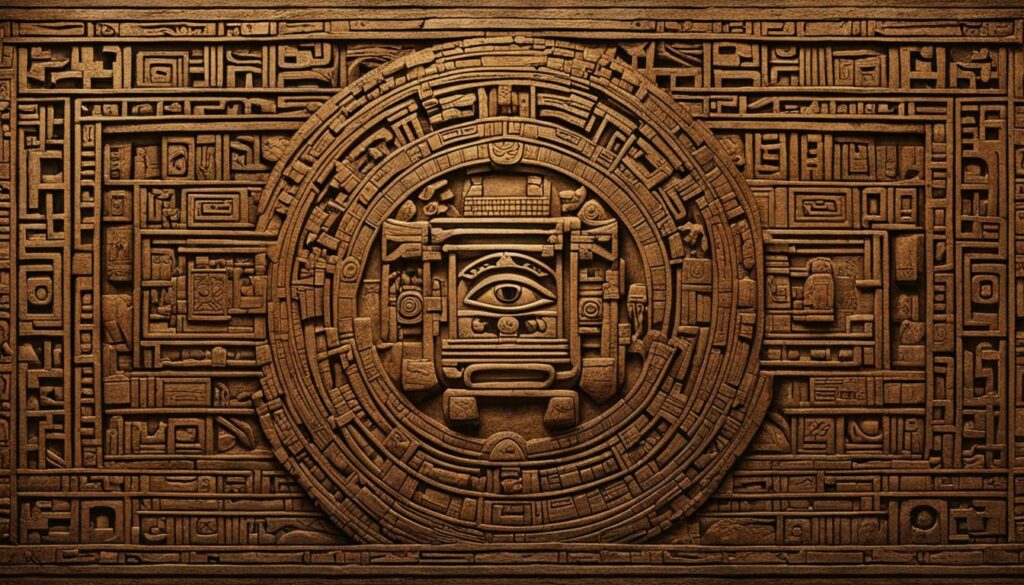
| Knorozov’s Contributions | Impact on Maya Studies |
|---|---|
| Deciphered the Maya hieroglyphic script | Enabled the interpretation of Maya inscriptions |
| Revealed the complex nature of the Maya writing system | Provided insights into Maya social and political structures |
| Uncovered details about Maya religious beliefs and rituals | Expanded knowledge of Maya astronomical knowledge |
| Enhanced understanding of Maya history and culture | Inspired further research and exploration |
The Relevance of Codice Maya de Mexico Today
The Codice Maya de Mexico continues to hold immense value today, providing important insights into the Maya civilization and serving as a cultural and historical link for modern Maya communities. This ancient Mayan codex, formerly known as the Grolier Codex, was discovered in Mexico in the 1960s and has since been the subject of extensive research and debate.
Scientific and art historical analyses have confirmed its authenticity, solidifying its status as the oldest surviving book of the Americas. The Codice Maya de Mexico offers a unique glimpse into the ancient Maya civilization, showcasing their sophisticated writing system, intricate hieroglyphics, and complex iconography.
Today, the codex serves as a valuable resource for scholars and researchers studying Mayan history, culture, and art. It provides valuable insights into the social, political, and religious aspects of the Maya civilization, shedding light on their beliefs, rituals, and daily life. The intricate details and symbolism depicted in the codex offer a rich tapestry of knowledge that deepens our understanding of this ancient civilization.
For contemporary Maya communities, the Codice Maya de Mexico holds cultural and historical significance. It serves as a tangible link to their ancient past, preserving their heritage and fostering a sense of pride and identity. By studying and preserving this precious artifact, modern Maya communities can reconnect with their ancestors and ensure the preservation of their cultural legacy for future generations.
“The Codice Maya de Mexico is not just a book; it is a living testament to the richness and complexity of the Maya civilization.” – Maya historian, Dr. Elena Martinez
In conclusion, the Codice Maya de Mexico is more than just a historical artifact. It is a window into the fascinating world of the ancient Maya, offering valuable insights into their civilization, culture, and history. Its continued relevance today highlights the enduring legacy of the Maya people and their contributions to Mesoamerican civilization.

| Key Points | Highlights |
|---|---|
| The Codice Maya de Mexico is the oldest surviving book of the Americas. | Provides important insights into the ancient Maya civilization. |
| Authenticity confirmed through scientific and art historical analyses. | Validates the historical and cultural significance of the codex. |
| Relevant to scholars, researchers, and contemporary Maya communities. | Deepens our understanding of Maya history, culture, and art. |
| Serves as a cultural and historical link for modern Maya communities. | Preserves and connects with their ancient heritage. |
Conclusion
The Codice Maya de Mexico stands as a testament to the rich cultural heritage and complex history of the Maya civilization, offering valuable insights into their society and serving as a bridge between the past and the present. Unraveling the Mysteries of Codice Maya de Mexico, a newly published book, explores the history, authentication, and modern relevance of this ancient artifact.
Formerly known as the Grolier Codex, this codex was discovered in Mexico in the 1960s and has been the subject of debate over its authenticity for over fifty years. However, recent scientific and art historical analyses have confirmed that it is indeed the oldest surviving book of the Americas, providing an unparalleled glimpse into the ancient Maya civilization.
In this comprehensive volume, readers are introduced to the creation, discovery, interpretation, and scientific authentication of the Codice Maya de Mexico. It includes a full-color facsimile and a guide to the codex’s intricate iconography. Through its pages, we gain an understanding of the uses and importance of sacred books in Mesoamerica, the role of astronomy in ancient Maya societies, and the codex’s enduring relevance to contemporary Maya communities.
Yuri Knorozov, a pioneering Soviet linguist, played a pivotal role in deciphering the Maya script and unlocking its secrets. His groundbreaking research revealed that the Maya hieroglyphic script was a fully functioning writing system capable of expressing sentences in the spoken language. Knorozov’s expertise, combined with reproductions of Mayan codices and a manuscript by Diego de Landa, enabled him to fill gaps in our understanding of Mayan history and shed light on the social, political, and historical aspects of the Maya civilization.
The Codice Maya de Mexico and Yuri Knorozov’s contributions serve as a testament to human curiosity, perseverance, and the power of knowledge. They remind us of the enduring legacy of the Maya civilization and the importance of preserving and understanding our shared cultural heritage. Through the exploration of this ancient codex, we gain a deeper appreciation for the rich tapestry of human history and the intricate complexities of the Maya civilization.
FAQ Codice Maya de Mexico
Q: What is Codice Maya de Mexico?
A: Codice Maya de Mexico is the oldest surviving book of the Americas, formerly known as the Grolier Codex. It was discovered in Mexico in the 1960s and has been the subject of debate over its authenticity for over fifty years.
Q: Is Codice Maya de Mexico authentic?
A: Recent scientific and art historical analyses have confirmed that Codice Maya de Mexico is indeed the oldest surviving book of the Americas, settling the debate over its authenticity.
Q: What does the book cover?
A: The book provides a comprehensive introduction to the creation, discovery, interpretation, and scientific authentication of the codex. It also includes a full-color facsimile and a guide to the codex’s iconography. Topics covered include the uses and importance of sacred books in Mesoamerica, the role of astronomy in ancient Maya societies, and the codex’s relevance to contemporary Maya communities.
Q: Who played a significant role in deciphering the Maya script?
A: Yuri Knorozov, a Soviet linguist, played a significant role in deciphering the Maya script. His research helped fill gaps in our knowledge of Mayan history and understanding the social, political, and historical aspects of the Maya civilization.
Q: How did Yuri Knorozov decipher the Maya script?
A: Despite not being able to visit the Maya lands or access original source materials, Yuri Knorozov’s expertise in studying other writing systems and the aid of reproductions of Mayan codices and a manuscript by Diego de Landa contributed to his successful decoding of the Maya script.
Q: What is the modern relevance of Codice Maya de Mexico?
A: Codice Maya de Mexico holds great significance in understanding the ancient Maya civilization and is relevant to contemporary Maya communities. It bridges the gap between the ancient past and the present, shedding light on the cultural heritage and history of the Maya people.
Source Links
- https://shop.getty.edu/products/codice-maya-de-mexico-understanding-the-oldest-surviving-book-of-the-americas-978-1606067888
- https://www.rferl.org/a/maya-code-deciphered-knorozov-centenary-ukraine-russia/32136439.html
- https://www.ancient-origins.net/news-history-archaeology/linguists-are-finally-unravelling-mysteries-trapped-within-mayan-021522

